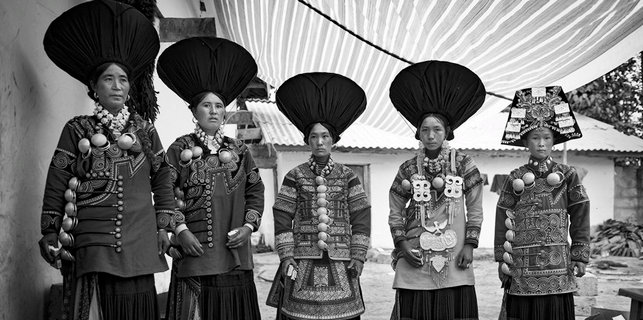Warriors of the sand dunes
 |
|
Caragana is planted on the loess plateau in Yuzhong county, Lanzhou, Gansu province to preserve rainwater and soil. Photos by Yang Yang / China Daily |
Creeping deserts pose a severe threat worldwide, and in North China everyone is pitching in to stop them in their tracks
It was the longest day of the year, and the sun would finally disappear below the horizon only after 9.30 pm. As tour buses slowly rolled into Crescent Spring scenic area in Dunhuang, Gansu province, excited passengers held their cameras and mobile phones aloft, eager to get shots, on both sides of the road, of the sand dunes at the foot of Singing Sands Mountain.
To eyes looking on from afar in fading light these gigantic dunes could easily have been dinosaurs - albeit ones with silky smooth skin - resting quietly on their bellies and about to settle in for the night.
Although it was still hot out in the open, the sand dunes, stretching this way and that as far as the eye could see, seemed to work a cooling, soothing magic, particularly the nearer we got to the small lake in the crescent shaped area that gives the place its name, a traveler's oasis where, at the end of a long journey, green plants can be seen once again.
Shogo Masuda, an official with the Japanese embassy in Beijing and one of 15 diplomats in the delegation on the trip, aimed at showcasing the Chinese government's efforts to deploy all the forces of forestation to halt the march of the spreading desert, called me over, keen to show me something he had just discovered after digging a hole in the sand beside the lake.
"It gets moister the deeper you dig," he said.
It was true, and the sand felt cooler when my bare foot touched the bottom. I looked around and noticed that the south bank of the spring looked darker.
"The spring used to be much larger," I said, recalling what I had read earlier about how it has shrunk.
Dunhuang has average rainfall of less than 50 millimeters a year, but in that time about 60 times that evaporates, too. However, for thousands of years the natural wonder that is Crescent Spring has been happy to cock a snook at the aridity that surrounds it.
Fifty years ago the spring, drawing water from below, was about 10 meters deep and covered about 15,000 square meters. However, since the 1970s the water level has dropped by as much as 10 meters, in line with that of Dunhuang generally, meaning that the well has at times been virtually dry.






















